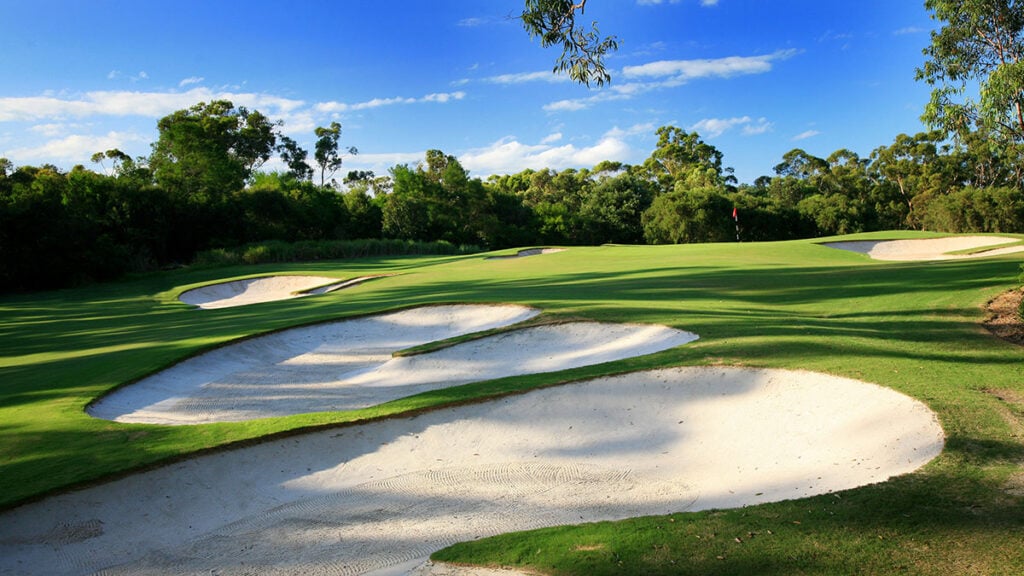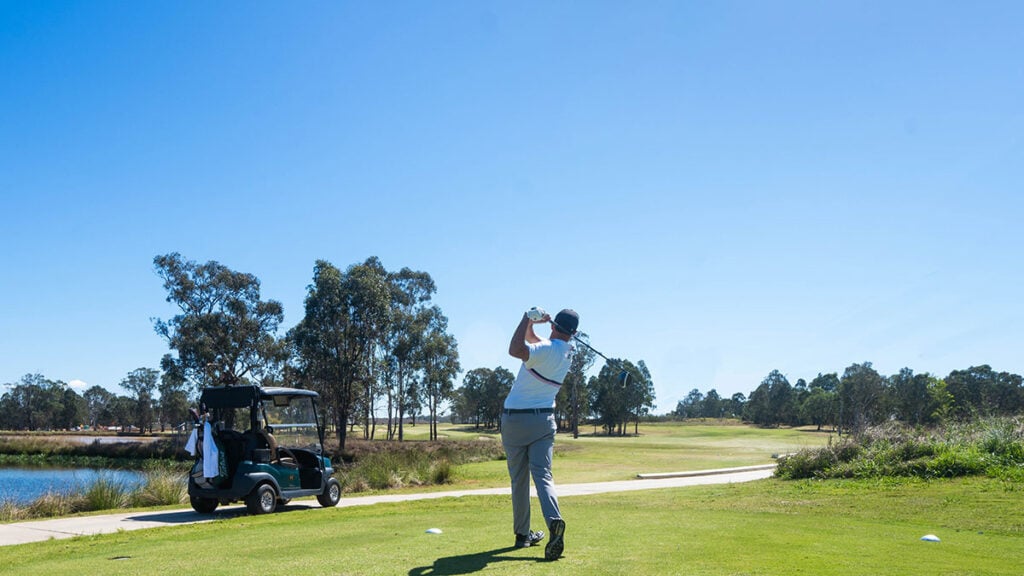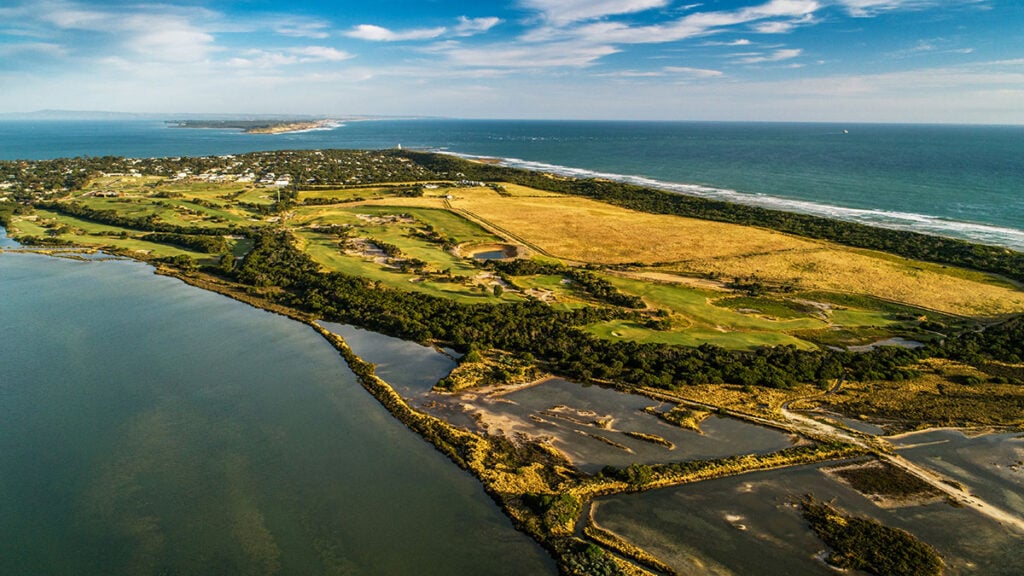EDITOR’S NOTE: Golf Digest Contributing Editor David Fay joined the United States Golf Association in 1978 and was the executive director from 1989-2010. He was a member at Baltusrol for more than 30 years.
My aunt and uncle (not golfers) lived about one mile from Baltusrol. Uncle Pete and Baltusrol’s golf professional, 1928 US Open winner Johnny Farrell, were members of the Holy Name Society at the local Catholic church. Thanks to them, I got, as a Christmas gift in 1966, a seven-day, grounds-only pass to the 1967 US Open. The memories from that week as a 16-year-old are indelible. It’s what got me hooked on golf.
Highlights: I got 126 player autographs, including Ben Hogan’s. I watched Jack Nicklaus and Deane Beman fiddling around on the practice green with a Bulls Eye putter, painted white. It turned out that Jack was to use “White Fang” to win the championship. I got my first live glimpse of Arnold Palmer as he was striding up to the fifth green in a practice round. His forearms were huge, and his golf shirt was light blue. Doug Sanders told me to buzz off after I’d asked for his golf glove. (Hey, it wasn’t a crazy request – I’d read that Doug used a fresh glove for each round, so if he was going to toss it anyway, why not give it to a young fan?) And I followed Nicklaus and Palmer for the entire final round. There was even a colour photo in some golf publication of Arnold and Jack on the 14th tee – and me, sitting on the grass in the first row, up against the gallery rope.
Most first-time guests want to play the Lower Course, site of two of Nicklaus’ four US Open titles and Phil Mickelson’s PGA Championship victory. But the members are partial to the Upper, site of the 1936 Open. The Lower is a brute. The Upper is far more nuanced, built into the side of Baltusrol Mountain (more like a bunny slope) with wild greens. Both courses were built in 1922 by A.W. Tillinghast. True, the range isn’t great, but it’s a helluva lot better than those found at other Tillie gems such as Winged Foot, Somerset Hills and Quaker Ridge.
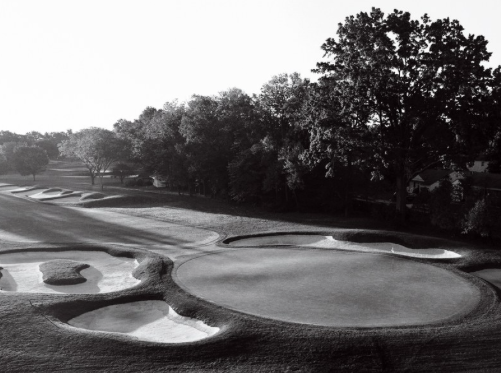
Playing a few holes on the Upper on a late afternoon is one of the joys of the game. The course is so expansive and bucolic, yet from a number of vantage points, you get great views of the Manhattan skyline less than 25 miles to the east.
If you have only 60 to 90 minutes to spare, Baltusrol has a bunch of loops on which to skip around and play. My favourites: holes 1-4 of the Upper before hopping over to Upper’s 15-17 and finishing on the Lower’s 18th, one of the game’s great reachable-in-two par 5s. Through necessity, I’ve often played the Lower’s 18th much like Ed Furgol in the final round of the 1954 Open: snap-hook drive, punch out left onto the 18th Upper fairway, then play the approach shot(s) back to the 18th Lower green. Another favourite loop is playing holes 1-5 on the Lower, then walking less than 30 yards to play the 18th Upper, one of the best finishing par 4s in golf. Both 18th greens are set just below Baltusrol’s stately clubhouse. No American golf club does a better job of preserving and presenting its visual history of photos, scorecards and trophies. A history 121 years rich, and counting.
I love everything about Baltusrol except its most photographed hole, the par-3 fourth on the Lower. The hole itself is good, but that damn stone wall guarding the green just doesn’t seem in balance with the other 35 holes. It has a Florida look. I wish in the redesign that Robert Trent Jones Sr had opted for a grass slope, kind of like the 12th at Augusta National, where a ball just might hang up on a tuft of grass near the edge of the pond.
SPEED GOLF AND GREAT MOMENTS
For a few years in the early 1990s, my fellow member and great friend Joe Wortley and I had an early-morning routine of playing 18 holes of speed golf. We’d show up a few minutes before 7am, flip a coin – Upper or Lower? – get our double caddie and take off. No searches beyond 20 seconds were allowed for errant shots. When we’d approach the green, we’d take our putters, chipping/pitching clubs and drivers and send the caddie out ahead to the next hole’s drive zone. Flagsticks remained in the holes, and we were very, very generous with conceded putts. If we came upon grounds-crew members working on the greens, we’d play approach shots well short of the green, pick up and move on so as not to interfere with their work. Our rounds averaged one hour, 46 minutes (Joe’s a CPA), with one hour, 27 minutes being our best. These scores weren’t for “handicap purposes,” but so what?
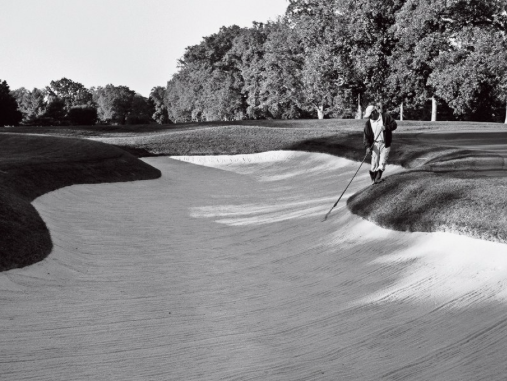
I never won one of Baltusrol’s big club titles – one that is posted on a plaque in the clubhouse – because I was not a good-enough player. But one year, I won a handicapped flight in the club championship when my opponent and friend, Rick Wheeless, sailed his 1-iron tee shot on the first extra hole (No. 1, Lower) out-of-bounds left onto Shunpike Road. That shot added to the many memories I had accumulated over the years from the opening hole on the Lower:
▶ At the 1967 Open, I’d witnessed Beman holing out a 4-wood in the first round for an eagle 2. Many years later, I got Deane to donate that 4-wood to the USGA Museum.
▶ On Day 2 of the 1980 Open, I was standing near the first tee watching USGA starter John Laupheimer explain to Seve Ballesteros the mechanics of why he was DQ’d from the championship for arriving too late to the first tee. Sad, but there was no choice.
▶ Not sad – pretty funny, actually – was the Jim Thorpe story at the first tee in the first round of the 1993 Open. This was told to me and many others by Ron Read, the USGA’s veteran starter, and confirmed emphatically years later by Jim. (“Damn right it happened.”) Ron, momentarily confused, thought that Thorpe had already played his tee shot dangerously close to the OB fence left. So when Ron saw Jim tee his ball, he did what any conscientious rules official would do: advise the player to announce the ball as a provisional in the event his original had rattled around the trees and fence and was in bounds. The only problem was that Jim had not yet played any ball. Jim, in the midst of milking the grip, stepped back and using colorful language, growled that the USGA was messing with his head even before he’d hit his first shot in the US Open!


